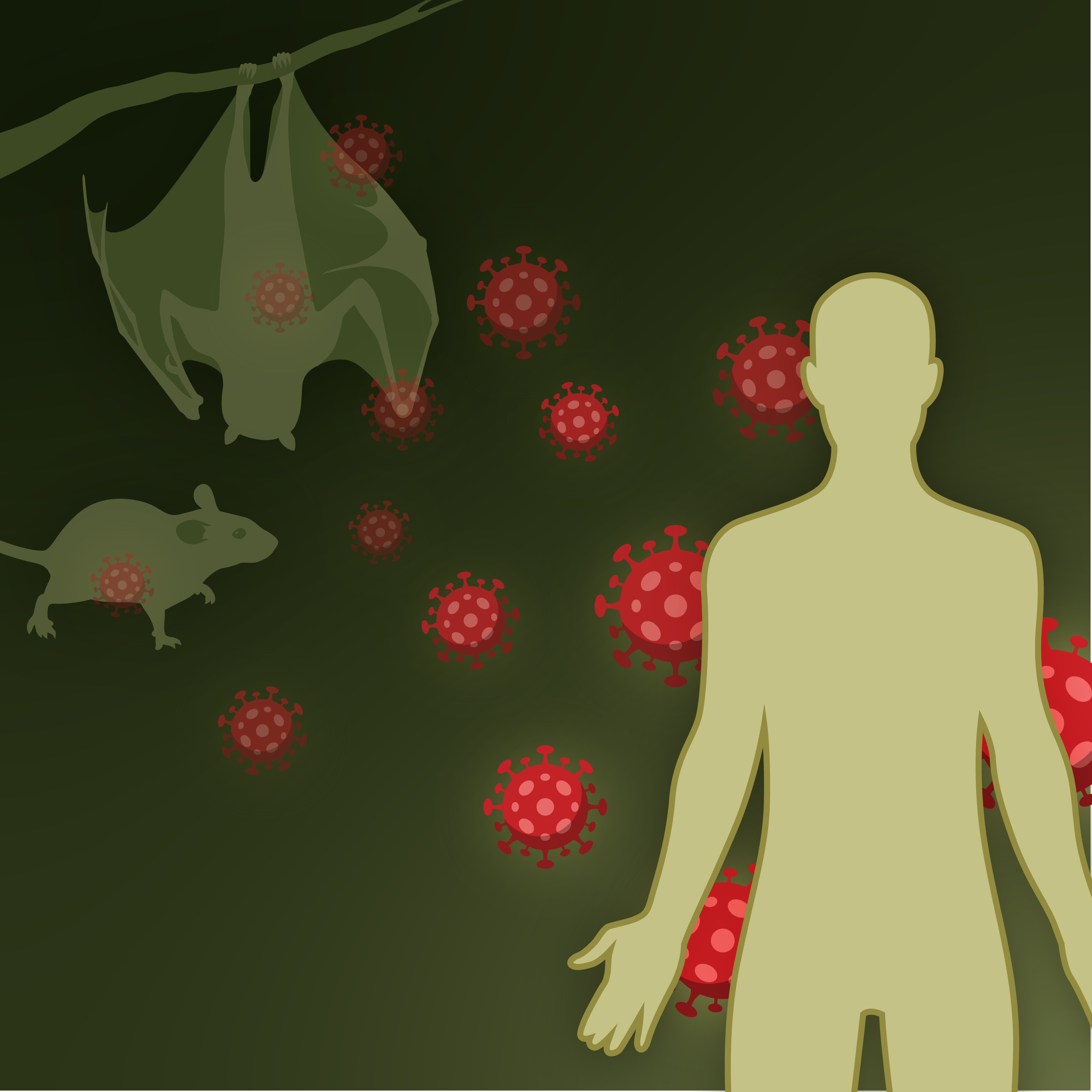Mathematical Models Allow Researchers to Predict the Likelihood and Intensity of Viral Spillover from Wildlife to Humans
October 28, 2022Illustration by Katy Lawler, IIDS Design & Marketing Coordinator

An interesting phenomenon arises when killing off wildlife populations that are transmitting lethal diseases to humans: it tends to increase viral spillover (the amount of virus that encounters humans). A 2012 study found that killing, or “cullingâ€, vampire bats in Latin America in the 1970s actually increased the frequency of rabies transmission to humans. The same phenomenon was observed with tuberculosis in badgers in the UK and fox rabies in Europe.
Why didn’t killing the reservoir species (in these cases, vampire bats, badgers and foxes) reduce the risk of viral spillover? While faulty application of methods might explain some of their failures, Biological Sciences Professor Scott Nuismer’s newly published study in the Proceedings of the Royal Society B biological research journal offers a more nuanced explanation.
To answer this question, Nuismer, his team at LEEEF and Associate Professor Christopher Remien sought to identify and quantify the necessary conditions for viral spillover by developing mathematical equations.
Nuismer studied how traits of reservoir species and viruses—such as life history, length of infection and average lifespan—affect the force of viral spillover. The “force of spillover,†he explained, is essentially the number of viral particles from the reservoir species that encounter humans, a statistic that depends on both the amount of virus a single organism transmits and the number of organisms that encounter humans. The team developed equations with these factors to test the likelihood of spillover for a particular reservoir species.
The team found that chronic infections are more likely to spill over into humans because they have more time to evolve and escape immunity, and that species with a short generation time are also more likely to transmit viruses.
The natural question that arises from this finding is that if generation time is important, how does changing the generation time affect viral evolution and spillover? If killing off reservoir species changes the generation time and the likelihood of spillover, this would explain why culling a species to block spillover creates the opposite effect.
To test this theory, Nuismer hopes to build off recent work by a group of researchers in West Africa who trapped multimammate rats that transmit Lassa virus, the virus that causes rabies. Obtaining sequences of Lassa Virus and uninfected rats would allow Nuismer to determine if changing the rate of turnover by trapping and killing the rats affected Lassa virus’ evolution in the study.
Lassa Virus has already been mapped extensively by LEEEF. In conjunction with U of I’s Research Computing and Data Sciences, they created a Preempt Lassa Virus Spillover map that provides the necessary background for his theory that intervention by culling is likely increasing spillover by shortening generation time. The map predicts risk of infection and evaluates methods of intervention in West Africa.
Now that Nuismer and his team have confirmed the conditions that make a species more likely to infect humans with viruses, another logical application is to target those species with vaccines. While it is impossible to vaccinate every organism with a needle, scientists from Germany, the UK and the U.S. are working together to create a self-disseminating vaccine by engineering a virus with the pathogen that stimulates immunity and spreads naturally in the population without harming the organisms. A prototype has already been created and tested at Rocky Mountain Laboratories, a National Institute of Health biomedical research facility in Montana.
Understanding the conditions necessary for spillover is just the first step “to find ways to reduce the risk of spillover from wildlife populations into the human population,†Nuismer said. “That’s the dream.†Nuismer’s mathematical models that illustrate the relationship between virus and reservoir species are extraordinarily valuable to the goals of the wider scientific community in the collective effort to block emerging infectious disease.
Article by Kelsey Swenson
IIDS Scientific Writing Intern